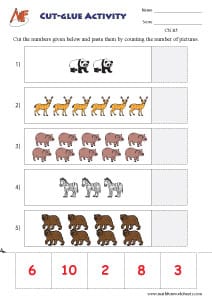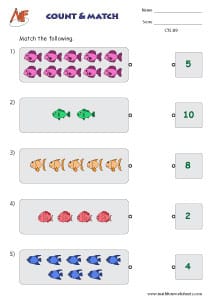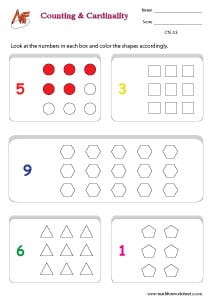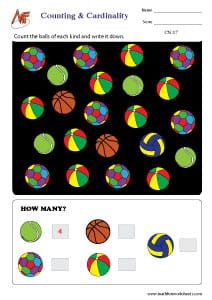- Home
- Numbers & Operations
- Counting & Cardinality
Browse by Topics
- English Worksheets
- Science Worksheets
- Kid's Corner
- Numbers & Operations
- Addition
- Subtraction
- Multiplication
- Division
- Decimals
- Place Value
- Roman Numerals
- Skip Counting
- Odd & Even Numbers
- Patterns
- Cardinal & Ordinal Numbers
- Rounding Numbers
- Estimation of Numbers
- Estimation of Time & Money
- Counting & Cardinality
- Comparing Numbers
- Ordering Numbers
- Fractions
- Prime & Composite Numbers
- Squares & Cubes
- Square & Cube Root
- Divisibility Rules
- Factors & Multiples
- Data Handling
- Algebra
- Ratio
- Least Common Factor
- Greatest Common Factor
- Percent Worksheets
- Proportion
- Order of Operations
- Scientific Notation
- Exponents
- Algebraic Expressions
- Evaluating Algebraic Expressions
- Simplifying Algebraic Expressions
- Graphing Lines
- Point Slope Form
- Two Point Form
- Two Intercept Form
- Equations
- Identifying Functions
- Evaluating Functions
- Function Table
- Domain and Range
- Trigonometric Charts
- Quadrants
- Polynomials
- Measurement
- Geometry
- Word Problems
Counting and Cardinality free worksheets for pre-school kids
Counting & Cardinality is the foundation of early math learning. It teaches children not only how to count in sequence but also helps them understand that numbers represent quantities. This essential skill prepares young learners for more advanced math concepts later on. To start, children begin by learning to count from 1 to 10. They recite numbers in order and match them with objects—like counting blocks, toys, or steps. This simple activity helps them connect spoken numbers to actual amounts, which is the first step in developing number sense.
As they progress, they begin to understand that the last number said when counting represents the total number of items in a group. This is known as cardinality. For example, when a child counts five apples and says “five,” they recognize that the group has exactly five apples—no more, no less.
Next, kids practice comparing quantities using terms like more than, less than, or equal to. They also learn to recognize written numerals and match them to a quantity. These activities support both counting fluency and number recognition.
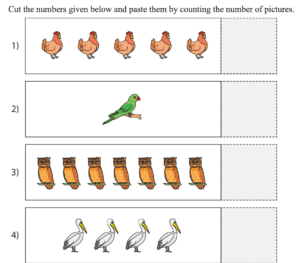
In addition, hands-on activities like counting games, puzzles, and interactive songs make learning fun and engaging. These tools help children develop a deep, lasting understanding of numbers through repetition and real-life examples.
By practicing daily, children build confidence and accuracy in counting. As a result, they are better prepared to tackle math challenges in kindergarten and beyond.
Counting and Cardinality worksheets free download pdf
COUNT THE ITEMS AND WRITE

COUNT THE ITEMS AND WRITE
In conclusion, mastering early skills like counting and understanding cardinality is crucial for future success in math. With regular practice and playful learning, young minds can grow into confident problem-solvers from the very beginning.


